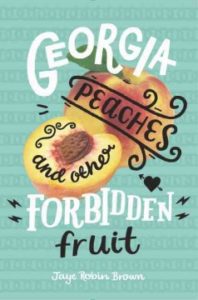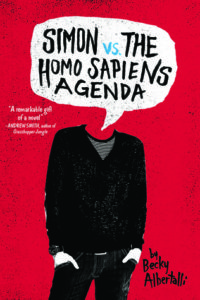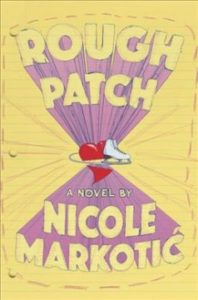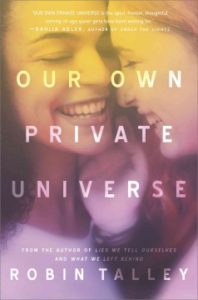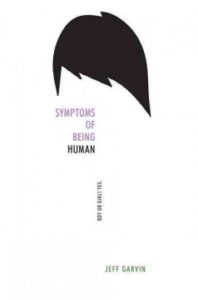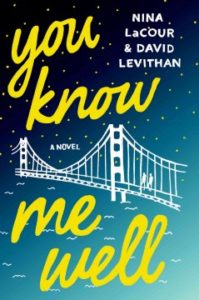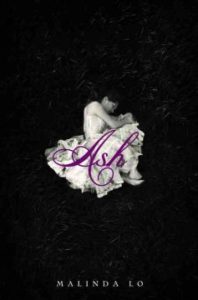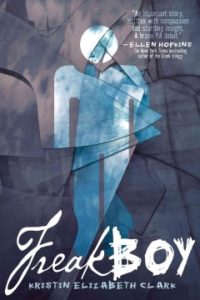You have probably heard some version of the LGBTQIA acronym used in the news, in discussion, or online, but do you know what all of those letters mean? Each letter refers to a non-heterosexual identity, whether it be lesbian, gay, bisexual, transgender, questioning, intersex, or asexual. In honor of LGBT pride month, we decided to break down the acronym and define each term. We have also included book titles that feature characters who identify as each term, showing you how these individuals experience the world.
All definitions mentioned were taken from the LGBTQIA Resource Center Glossary, provided online by UC Davis.
L is for Lesbian
Lesbian is a word used to identify women who are primarily attracted, sexually and affectionately, towards those of the same gender.
Georgia Peaches and Other Forbidden Fruit, by Jaye Robin Brown
Everything Leads to You, by Nina LaCour
G is for Gay
Gay is a term that can be used to refer to men who are primarily attracted, both sexually and affectionately, toward those of the same gender. It can also be used as an umbrella term for both men and women.
Simon vs. the Homo Sapiens Agenda, by Becky Albertalli
History is All You Left Me, by Adam Silvera
B is for Bisexual
Bisexual is a term used to identify those who are primarily attracted, both sexually and affectionately, to those of the same and other genders, or towards people regardless of their gender.
Rough Patch, by Nicole Markotic
Our Own Private Universe, by Robin Talley
T is for Transgender
Transgender describes a wide range of identities and experiences of people whose gender identity and/or expression differs from conventional expectations based on their assigned sex at birth. This umbrella term includes those who don’t identify as either man or woman and those who identify as having no gender or multiple genders.
If I Was Your Girl, by Meredith Russo
Symptoms of Being Human, by Jeff Garvin
Q is for Queer or Questioning
Queer is an identifying term used by those who don’t wish to categorize themselves into one identity within the LGBTQIA spectrum. It can also be used to identify all of those in the LGBTQIA spectrum.
You Know Me Well, by Nina LaCour and David Levithan
Ash, by Melinda Lo
Questioning is a an identifier for those who are in the process of exploring their own gender identity, gender expression, and/or sexual orientation.
Freakboy, by Kristin Elizabeth Clark
Ramona Blue, by Julie Murphy
I is for Intersex
Individuals who are intersex are those who naturally (without medical intervention) develop primary or secondary sex characteristics that do not fit into society’s definitions of male or female.
None of the Above, by I.W. Gregorio
Alex as Well, by Alyssa Brugman
A is for Asexual
Asexuality is a sexual orientation generally characterized by not feeling sexual attraction or a desire for partnered sexuality.
Seven Ways We Lie, by Riley Redgate
Quicksilver: The 2nd Book in the Ultraviolet Series, by R.J. Anderson
Find more teen reading resources on the library’s Teens page, or ask a librarian for assistance in finding new materials!

